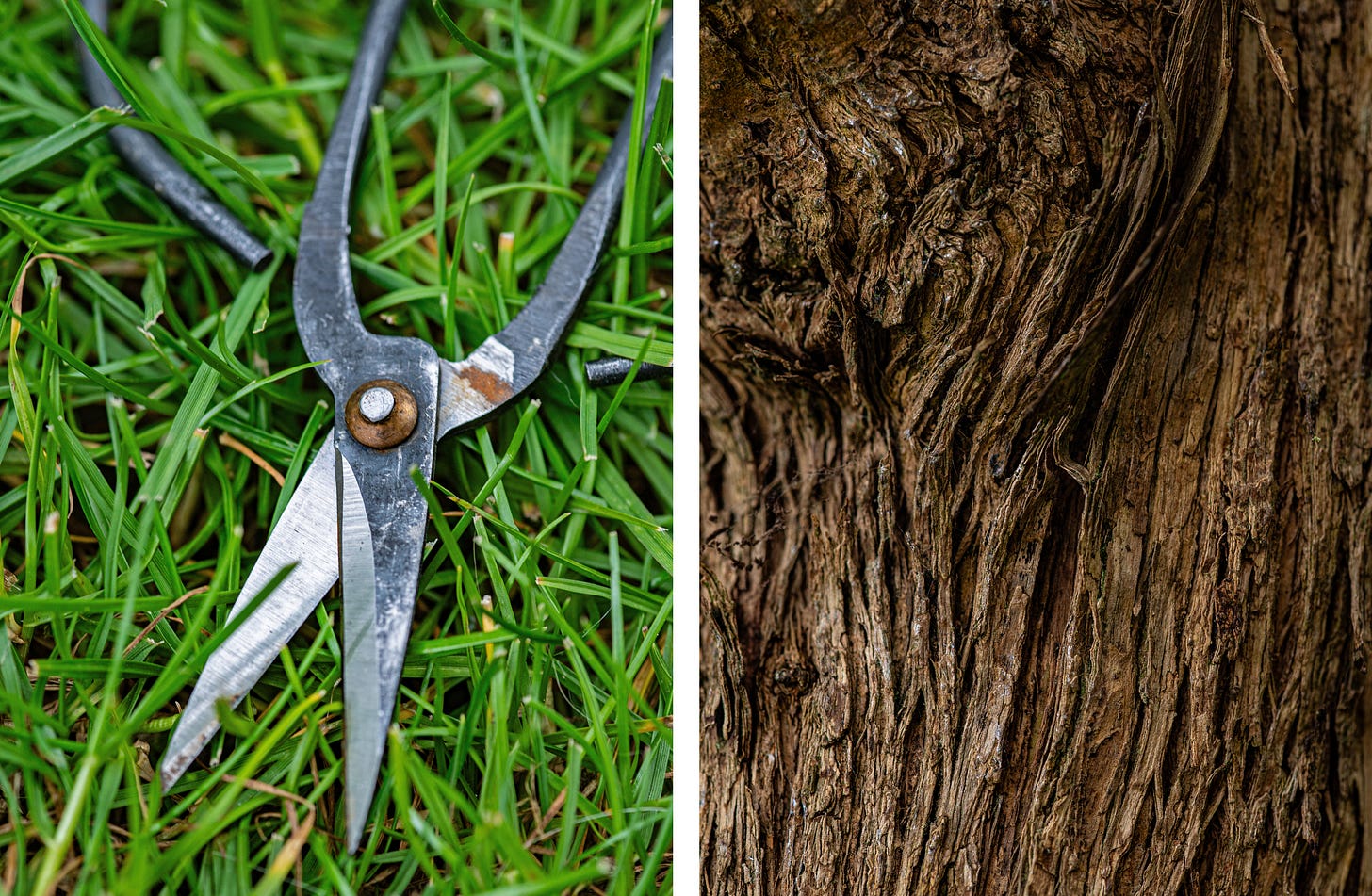The trail of blossom detritus runs the full length of the gutter. Burned and shrivelled now; it was once pink. There used to be a carpet of cherry blossom across the lawn in the back garden of our first home. It fell in April, the fruit came in July, and by August and September, only a litter of stones and stalks could be found upon that lawn and the broken path next to it, growing more and more brittle with each passing month. There were two apple trees at the top of that garden. The fruit from one were edible, though suitable only for stewing. Mum made crumbles, pairing them with blackberries picked from the brambles that wove through the paling that separated Grandad’s garden from ours. The small garden at the front of the house showed itself far more drab and unkempt than the one at the back – told all who passed by of the desuetude of our home. Crab apples the weight of steel balls hung from a thorny low-lying hedge beneath the window. In the centre of that small square garden was the cut-off stump of another apple tree, long dead and greying. Twin boys would circle that stump in dizzying runs: a maypole of neglect, colour-ribboned by the innocence of children at play. We hid there, climbed and perched onto it, and stowed Ewok and biker scout figures into its burls and ridges. All around, the grass grew tall, up past the waists of three children. Then, one summer, it was suddenly cut right down to the ground. I can’t remember how or by whom, nor could I remember it having been shorn like this before. We fostered a pride for our regenerated space: a garden now almost like the other ones on the road. We made neat the edges with a pair of household scissors that left the flesh of our fingers and thumbs blistered and torn.1 The door was duck-egg blue, perhaps duskier, perhaps another colour altogether: perhaps Mum might know better. Pete once punched a hand straight through the glazed panel. An explosion of glass, pre-empted by an explosion of rage to be followed by an explosion of pain. Blood and fear bloomed in unison as we waited for Mum to discover what had happened. The door was repaired soon after and the smell of glazer’s putty is still perhaps the one that I most strongly associate with the house at 48 Bosworth Road. I can’t recall if the numbers 4 and 8 were plated on the door or screwed into the frame or brickwork, but they were the first two numbers on which we forged and which forged upon us an identity, resonating as loudly today as anything else from our childhood. I am certain they will forever be impossible to lose amidst so much else that we have yet to forget. Crab apples and tree stumps might continue to recall glimpses of that run-down house and return the darkly sweet taste of a blackberry just picked, but the number 48, just like the number 44, will forever unlock far more: the long grass and the clipped lawn edges, the smart of that broken skin inside the handle of those scissors, the soft fingerprint indentations we formed into the setting putty, and the blossoms, fruits and stones scattered across the floor of that first back garden.
‘Friday Fragment’ is an additional weekly instalment to my A Thousand Fragments monthly newsletter. (For those who have been kind enough to support my writing with a donation or paid subscription, I have paused that process until mid-June in lieu of several posts still to be published.)
When I mow the lawn these days, I still finish by trimming the edges with a pair of regular scissors. As often as not, the flesh between thumb and forefinger will rub, burn and blister.



Bloody hell Matt, I think we lived down the road from you.
Lovely works as always, I'd forgotten about putty and now can very much smell it in my imagination